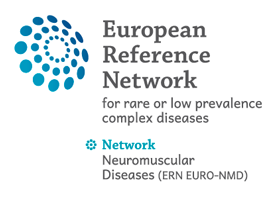26 Feb 2019
Idiopathic inflammatory myopathies: narrative review of unmet needs in clinical practice guidelines
Authors:
Alain Meyer, Carlo Alberto Scirè, Rosaria Talarico, Tobias Alexander, Zahir Amoura, Tadej Avcin, Simone Barsotti, Lorenzo Beretta, Jelena Blagojevic, Gerd Burmester, Ilaria Cavazzana, Patrick Cherrin, Laura Damian, Andrea Doria, João Eurico Fonseca, Federica Furini, Ilaria Galetti, Frederic Houssiau, Thomas Krieg, Larosa Maddalena, David Launay, Raquel Campanilho-Marques, Thierry Martin, Marco Matucci-Cerinic, Pia Moinzadeh, Carlomaurizio Montecucco, Maria Francisca Moraes-Fontes, Luc Mouthon, Rossella Ner, Sabrina Paolino, Yves Piette, Simona Rednic, Farah Tamirou, Angela Tincani, Natasa Toplak, Stefano Bombardieri, Eric Hachulla, Ulf Mueller-Ladner, Matthias Schneider, Vanessa Smith, Ana Vieira, Maurizio Cutolo, Marta Mosca and Lorenzo Cavagna
Idiopathic inflammatory myopathies (IIMs) encompass a heterogeneous group of rare autoimmune diseases characterised by muscle weakness and inflammation, but in antisynthetase syndrome arthritis and interstitial lung disease are more frequent and often inaugurate the disease. Clinical practice guidelines (CPGs) have been proposed for IIMs, but they are sparse and heterogeneous. This work aimed at identifying: i) current available CPGs for IIMs, ii) patients ’ and clinicians’ unmet needs not covered by CPGs. It has been performed in the framework of the European Reference Network on rare and complex connective tissue and musculoskeletal diseases (ReCONNET), a network of centre of expertise and patients funded by the European Union’s Health Programme. Fourteen original CPGs were identified, notably recommending that: i) extra-muscular involvements should be assessed; ii) corticosteroids and methotrexate or azathioprine are first-line therapies of IIMs. ii) IVIG is a treatment of resistant-DM that may be also used in other resistant-IIMs; iii) physical therapy and sun protection (in DM patients) are part of the treatment; v) tumour screening for patients with DM include imaging of chest, abdomen, pelvis and breast (in woman) along with colonoscopy (in patients over 50 years); vi) disease activity and damages should be monitor using standardised and validated tools. Yet, only half of these CPGs were evidence-based. Crucial unmet needs were identified both by patients and clinicians. In particular, there was a lack of large multidisciplinary working group and of patients ’ preferences. The following fields were not or inappropriately targeted: diagnosis; management of extra-muscular involvements other than skin; co-morbidities and severe manifestations.

